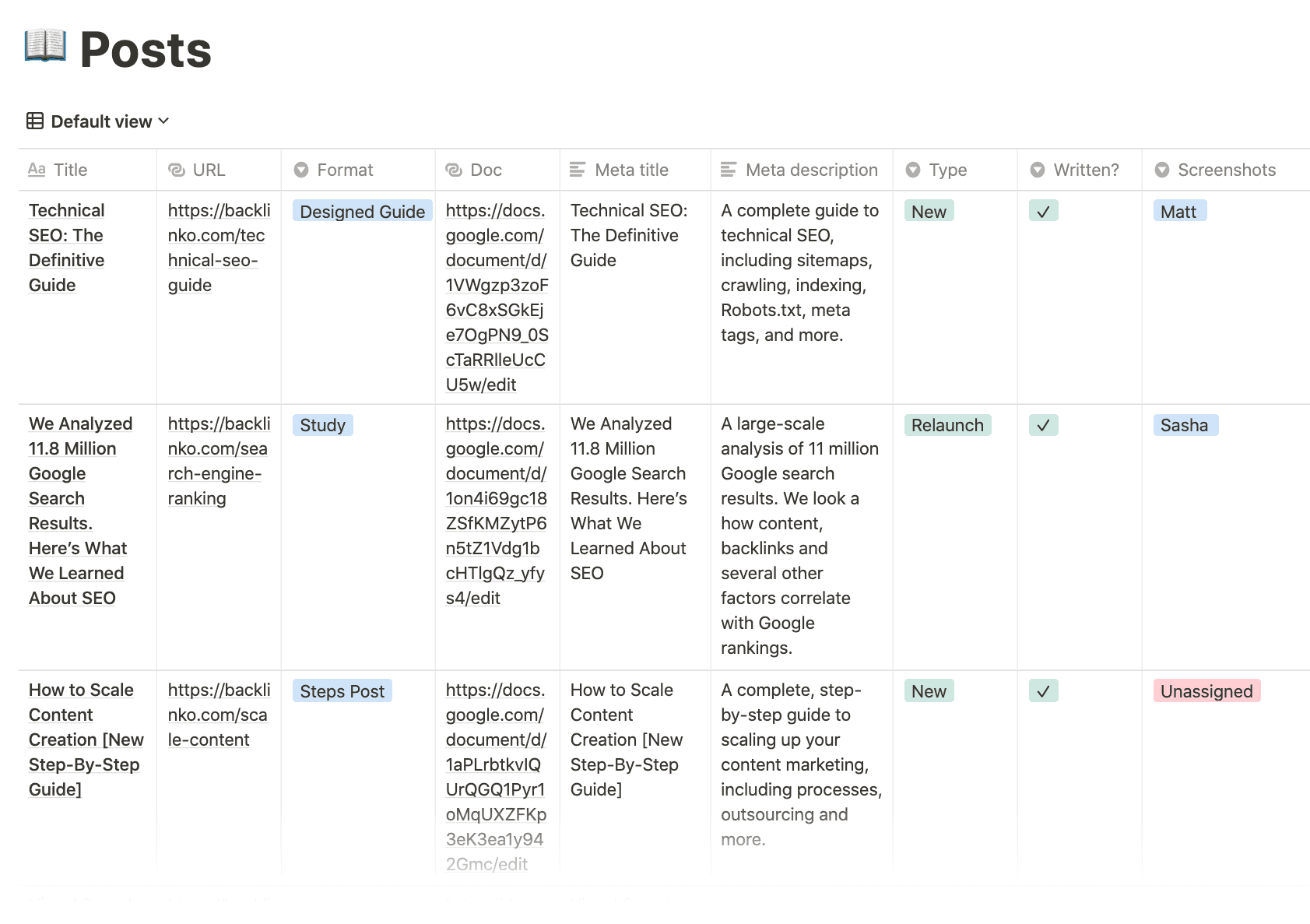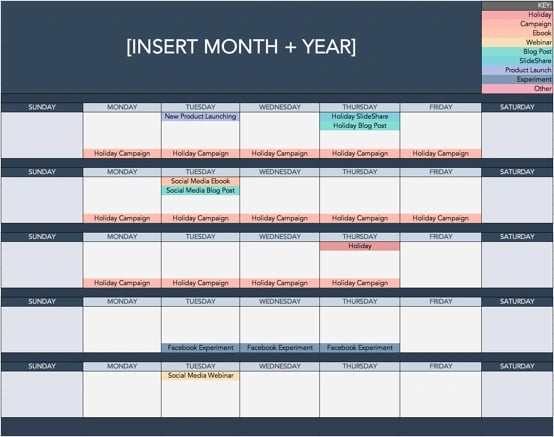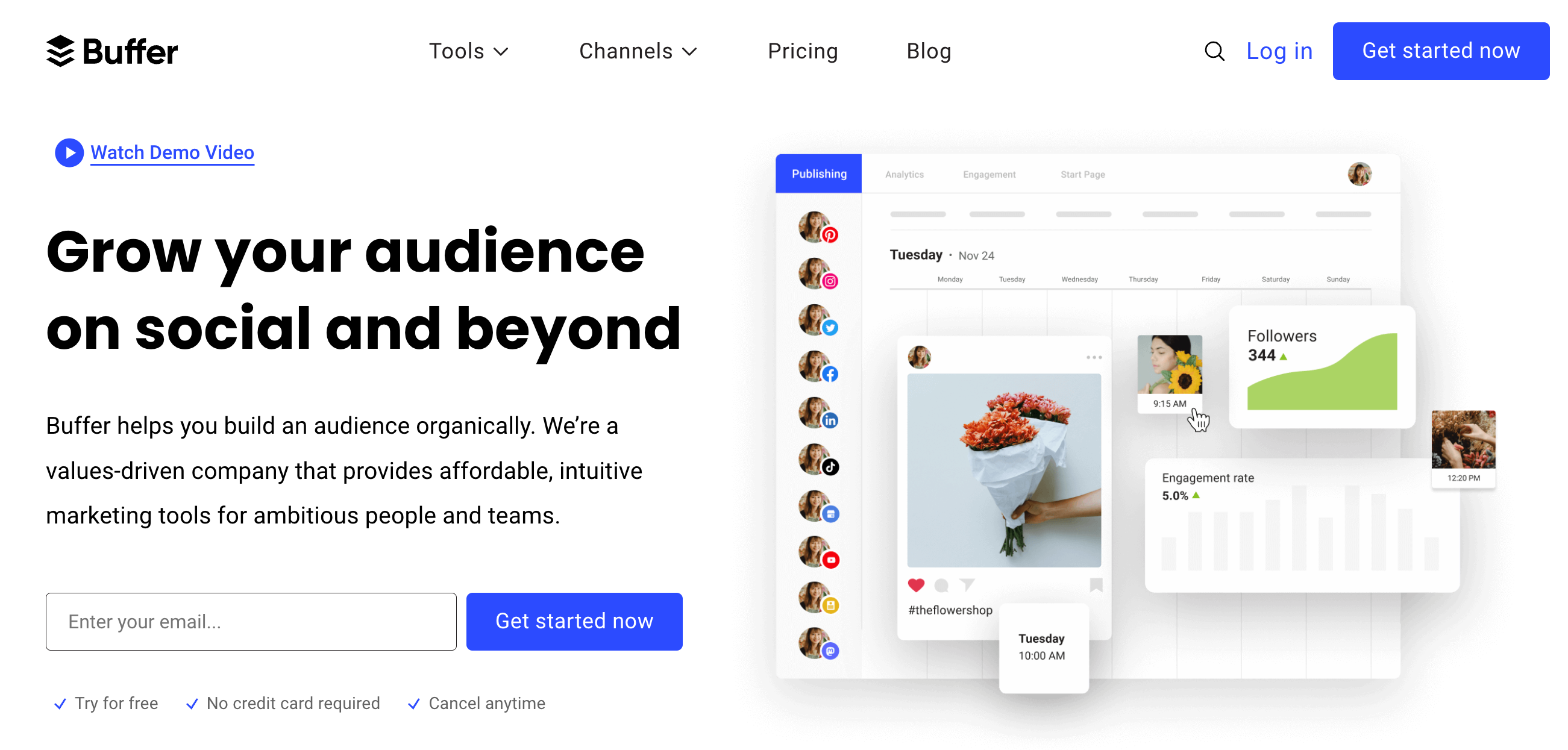Cracking the code to effectively add product launches to your content calendar is no mean feat. It’s a game-changer in attaining content relevance, timing, and consistency for 2024.
Revolutionizing your content planning with a concise product launch calendar isn’t an option; it’s a survival skill in today’s fast-paced digital arena.
Every second, myriad brands launch new offerings, each vying for the audience’s short-lived attention span. It’s equivalent to every person in New York City launching a new product every single day – overwhelming, to say the least.
But here’s your edge – an insider’s guide to constructively add product launches to your content calendar. Read on to stay ahead of the pack and never miss a beat in the 2024 product launch cycle. Buckle up for your ultimate guide to a streamlined, integrated content calendar that packs a punch.
Understanding the Role of a Content Calendar in Product Launches
- Facilitates strategic planning and prevents last-minute content creation.
- Promotes consistency and coherence in brand messaging.
- Leads to more successful product launches.
What is a Content Calendar?
A content calendar is a strategic tool used for organizing, managing, and scheduling the content creation process. Simplified, it’s your team’s content roadmap - a clear, visual representation of what content is being created when, where it is to be published and how it will be promoted.
It’s undeniable that content calendars prove particularly beneficial for product launches. Well-planned content boosts:
- Customer awareness
- Engagement
- Impressions
- Reach
- Understanding
Thereby augmenting the likelihood of a successful product introduction.

Why Use a Content Calendar for Product Launches?
By scheduling content related to your product’s launch, anticipation and excitement can be built in the consumer’s mind. This leads to:
- Improved brand visibility
- Knowledge of what to expect
- Higher demand for the unveiled product
For instance, a tech company planning to introduce a new smartphone might plot out a series of content to hype the launch. It could look something like this:
- An initial blog post outlining why the world needs another smartphone
- A teaser video demonstrating unique features of the upcoming device
- A contest for early bird access
- An influencer reveal
This can all be scheduled in the content calendar weeks or months before the launch. Consequently, by the D-day, an eager, well-aware market awaits the product unveiling.

Content Calendar Examples for Product Launches
Content calendars are creatively employed for product promotion in diverse industries. Imagine a fashion brand intending to introduce a new clothing line. A reveal could be scheduled as a series of unveiling content in the weeks leading up to the official launch.
The unveiling content series might look like:
- A blog post detailing the inspiration behind the clothing line
- Previews of select clothing pieces
- Celebrity endorsements
- Glimpse of behind-the-scenes production processes
- The official launch show invite
These can all be systematically released on specified dates on various platforms. This should include and guide your whole content strategy.
The success from these content ideas and examples stems from a systematic, organized approach to content management and scheduling. Hence, positioning your next product launch on a content calendar could give it the reception and sales performance it deserves.
Step-by-Step Guide to Adding Product Launches to Your Content Calendar
- Gain clarity on what a product launch calendar template is and its key elements.
- Discover the significance of planning your product launches and tips on how to effectively do so.
- Master the process of aligning content with your product launches in your content calendar.
Step 1: Understanding Your Product Launch Calendar Template
A product launch calendar template is a strategic tool that offers a visual timeline detailing the activities leading up to the official introduction of your product to the market.
It is a vital component of your product launch strategy, acting as a guide for coordinating various elements such as marketing campaigns, PR activities, and internal preparedness.
This calendar plays a crucial role in determining the success of your product launch which, in turn, greatly influences the product’s overall performance. Ensuring that your template is detailed and organized is of utmost importance. It should capture essential components including key milestones, designated responsibilities, and projected timelines for each activity.

Step 2: Planning Your Product Launches
The implementation of any project is dependent on eager foresight and judicious planning. This is especially true with product launches wherein coordinated efforts across various departments are required for the successful introduction of your product to the marketplace. Use the following three steps:
- Start by working backwards: Start by firmly setting your product’s launch date and then systematically allocate time for each preceding task.
- Give ample time for each stage of your product launch: This will help you avoid rushed, last-minute endeavors which may jeopardize the quality of the project.
- Stakeholder communication: It’s essential that you have clear, honest communication with stakeholders to ensure agreed-upon timelines and responsibilities are well understood.
Step 3: Adding Product Launches to Your Content Calendar
So, now everything is well planned – the next task is to add product launches to your content calendar. Doing so ensures that your marketing strategy dovetails with your product rollout, creating a harmonious brand narrative that effectively enhances customer engagement.
Start by identifying key milestones in your product launch timeline and corresponding content pieces that align with each phase. For example:
- Blog posts: To introduce the basic ideas of your product
- Social media promotions: To reveal product teasers to match initial production stages
- Behind-the-scenes content: To build excitement and anticipation
- Founder interviews: To coincide with final product testing
Enforcing cohesion between product development and content creation schedules is not a mere administrative formality – it’s a conscientious approach that fosters a brilliant, well-orchestrated product launch.
Best Practices for Maintaining Your Product Launch Calendar
- Regular updates to the product launch calendar are pivotal for ensuring smooth product launches.
- Content calendars must be meticulously aligned with product launch schedules.
Regularly Updating Your Calendar
A product launch calendar is similar to a living organism – it demands regular nurture. Updating your calendar isn’t an overwhelming chore. Instead, view it as an integral part of an efficacious product launch strategy. Use the following three steps to ensure your keeping your content calendar relevant:
- Frequent reviews: Just as financial experts advocate regular check-ups on investments, product managers should frequently review and update their launch calendars. This routine helps keep everyone on the same page and allows for agility in reacting to unforeseen changes.
- Engage in target setting: If the product team recently finished a features update, add that to the calendar. Discovered a new potential bottleneck? Mark it down.
- Consistency: Regular updates can have a snowball effect, with small routine adjustments leading to significantly optimized product launches.
Aligning Your Content Calendar with Product Launches
Think of a product launch and content calendar as dance partners – the flow of one should complement the rhythm of the other. Achieving a synchronized harmony could mean the difference between a successful launch and a major flop.
The Symbiosis Between Product Launches and Content Calendars
A successfully aligned content calendar and marketing strategy serves as a fantastic trumpet that announces your product launch. It carries teaser announcements, features breakdowns, testimonial-based content, and post-launch updates – all beautifully intermeshed with the rhythm of the product launch schedule.
Toying with the idea of a YouTube featurette series highlighting cool product features? Schedule content to cover that in your calendar.
This synergy not only amplifies the reach of your product launch but also reduces the chances of miscommunication, ensuring a smoother launch. That’s what you could call a win-win situation.
So there you have it – the two fundamental best practices for maintaining your product launch calendar. Heading into 2024 armed with these tips, you’re all set to masterfully add launches to your content calendar.
Leveraging Social Media Tools for Your Product Launch Calendar
- Cruciality of social media during product launches
- Top-notch social media tools for product launch calendars
- Integration of social media tools into content calendars
Case Studies of Social Media in Product Launches
Social media platforms are proving to be game-changers in reaching your target audience with product launches. They offer an unrivaled opportunity to engage and connect with thousands of potential customers in real time.
For instance, tech giant Apple consistently uses social media to whip up excitement around their new products. Think about their ‘Shot on iPhone’ campaign that took over X, Instagram, and Facebook.
Aside from large businesses, startups also harness the power of social media channels. They use platforms like Instagram, LinkedIn and YouTube, to generate product awareness and drive customer engagement.
An example of a startup that rose to prominence through the efficient use of social media is Glossier, the beauty brand. Glossier relies heavily on user-generated content, maintaining an open and ongoing conversation with its followers, and using their feedback to refine their products. The result – a fiercely loyal customer base that feels heard, valued, and connected to the brand.

Best Social Media Tools for Product Launch Calendars
A product launch calendar is only as good as the tools that support it. Thankfully, a variety of high-caliber social media content calendar tools are designed specifically to streamline and enhance your product launch schedules. Some of the leading contenders in the SaaS industry, known for their robust features and user-friendly interfaces include:
- Buffer: This social media content calendar app stands out due to its homepage analytics which saves time on deciding the best time to post.
- Hootsuite: This tool integrates well with other software platforms, making information sharing seamless.
- Sprout Social: This app combines social media management with customer service, making it easier to resolve any issues that arise post-launch.
Each tool is unique and offers a range of features, hence it’s important to choose the one that best aligns with your goals and needs.

Integrating Social Media Tools with Your Content Calendar
Integrating your social media tools with your content calendar is a crucial step in ensuring your product launches are well planned and executed. CoSchedule and Trello, for instance, offer excellent services for integrating social media schedules with content calendars, providing a comprehensive view of your product launch timeline.
Implementing this integration starts with an audit of your current content calendar and social media schedule. This step will help you identify which social media posts line up with your product launch and when.
Then, using your integration tool of choice, you will import your social media schedule into your content calendar, ensuring the two sync perfectly.
The end result is a unified view of all your content and social media posts relative to your product launch timeframe. Written tutorials, video content or both may prove useful for explaining the process further.

Time to Get This Launch Party Started
Your 2024 can be exceptionally structured with a product launch calendar ready at your business’s helm. Prioritize your launches, keep track of critical milestones, and effectively communicate across teams for smoother, more successful releases.
Stepping into this information-filled journey brings you value beyond measure. By integrating your product launches into your content calendar, you are accommodating growth for your brand while keeping your audience in the loop.
Do yourself a favour, start aligning your departments today. This harmonization between product development and content creation will lead to stronger, well-timed content that will hype up your audience for your upcoming launches.
Now the ball is in your court. How are you planning to structure your first product launch calendar for 2024?
Remember, a well-planned product launch leads not just to hype and anticipation but the promise of satisfaction. Your 2024 calendar is ready. It’s time to map your journey to success.

